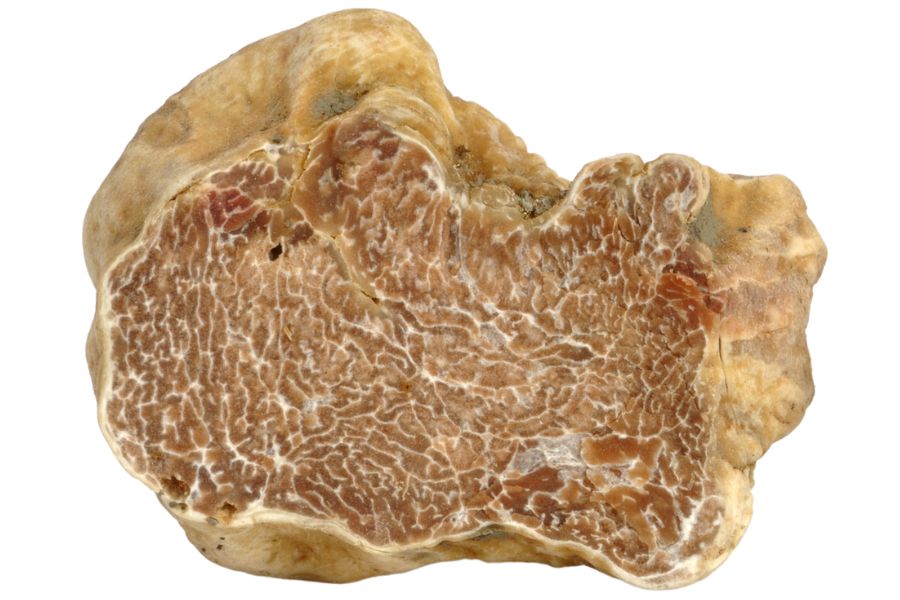Colorado isn’t the first place most people associate with wild truffles, but that’s exactly what makes the hunt here so interesting. Beneath the quiet forests, these mushrooms form out of sight in the same soil that produces so many other edible species.
They don’t show themselves easily, and even experienced foragers can walk right past without knowing they were ever there. A few pounds can go for $50 or several hundred depending on quality.
Truffles carry a kind of mystery because they’re valuable, seasonal, and hidden below your feet. Most people don’t even know they’re native to this part of the country.
The ones who do know aren’t always eager to share what they’ve found. But knowing where to look in Colorado can lead to a foraging haul worth far more than just truffles.
What We Cover In This Article:
- What Wild Truffles Look Like
- Truffle Lookalikes To Avoid
- Best Practices For Finding Truffles
- Where You Can Find Truffles Around The State
- Other Great Locations For Truffles
- When The Best Time Of The Year Is To Find Truffles
- The extensive local experience and understanding of our team
- Input from multiple local foragers and foraging groups
- The accessibility of the various locations
- Safety and potential hazards when collecting
- Private and public locations
- A desire to include locations for both experienced foragers and those who are just starting out
Using these weights we think we’ve put together the best list out there for just about any forager to be successful!
A Quick Reminder
Before we get into the specifics about where and how to find these plants and mushrooms, we want to be clear that before ingesting any wild plant or mushroom, it should be identified with 100% certainty as edible by someone qualified and experienced in mushroom and plant identification, such as a professional mycologist or an expert forager. Misidentification can lead to serious illness or death.
All plants and mushrooms have the potential to cause severe adverse reactions in certain individuals, even death. If you are consuming wild foragables, it is crucial to cook them thoroughly and properly and only eat a small portion to test for personal tolerance. Some people may have allergies or sensitivities to specific mushrooms and plants, even if they are considered safe for others.
The information provided in this article is for general informational and educational purposes only. Foraging involves inherent risks.
What Wild Truffles Look Like
The U.S. is home to several native truffle species that grow wild in forests across the country. Each one has its own unique scent, appearance, and preferred habitat. Here are the types of truffles you can find:
Oregon Black Truffles (Leucangium carthusianum)

Leucangium carthusianum, also called the Oregon black truffle, grows in the Pacific Northwest and usually shows up around Douglas-fir trees. It’s a native species and one of the more well-known edible truffles from the region.
On the outside, it looks like a small lump of coal—dark black, kind of lumpy or warty, and sometimes slightly smoother in spots. They’re usually about the size of a golf ball, but they can be smaller or larger depending on the season.
Inside, the truffle is firm with a marbled pattern of gray and white veins running through it. When it’s fresh, it smells fruity, almost like pineapple, but the scent gets stronger and muskier as it ripens.
If you’re out looking for them, check in moist, shady forests with soft, loamy soil, especially where there’s a lot of moss or ferns. They grow just below the surface, so people often use trained dogs to help sniff out the ripe ones.
Compared to the Oregon white truffle, which is lighter in color and has a sharper, garlicky aroma, the black truffle has a deeper, more earthy smell. It’s also bigger and firmer than the southern U.S. truffles like Tuber lyonii, which tend to be smaller, paler, and grow around hardwoods like oaks and hickories.
Oregon Winter White Truffles (Tuber oregonense and Tuber gibbosum)
Oregon has two native white truffles that are starting to get more attention: the Oregon Winter White Truffle (Tuber oregonense) and the Oregon Spring White Truffle (Tuber gibbosum). They grow underground in forests and are prized for their strong, savory aroma.
From the outside, these truffles are small, roundish, and kind of bumpy, usually pale beige to light brown. Cut one open, and you’ll see a white interior that darkens with age, showing off a web of white veins when it’s fully mature.
The Winter White Truffle pops up from late fall into February, while the Spring White starts showing up around January and can last into June. They’re pretty similar, but the Winter variety is known for having a more powerful scent and flavor.
To find them, you’ll want to look in forests with younger Douglas-fir trees on the west side of the Cascades. Truffle hunters often check for loose soil or spots where animals have been scratching, which can be a sign there’s something below.
When fully ripe, both types give off a bold smell that’s often compared to garlic, cheese, or earthy spices. They’re usually served raw, shaved over dishes to add that truffle kick without losing any of the aroma.
Appalachian Truffle (Tuber canaliculatum)
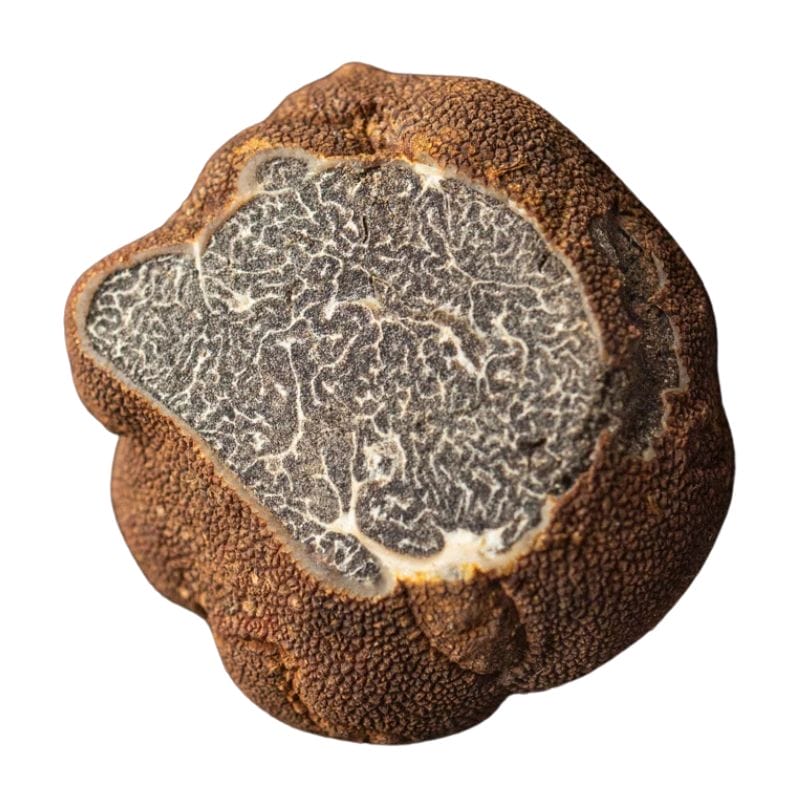
The Appalachian truffle, also known as Tuber canaliculatum, is a native North American truffle that’s slowly getting noticed. It’s about the size of a walnut and has a reddish-brown, bumpy outer surface that looks kind of like a rough, warty potato.
When you cut it open, the inside is firm and dark brown with thin white veins running through it like a marbled pattern. If it’s fully ripe, the smell is strong and earthy—some say it has a kind of nutty, funky aroma that stands out.
You can find these truffles in mixed hardwood forests, especially around oaks and pines, from late summer through fall. They grow underground, so look for spots where the soil is loose and animals like squirrels have been digging—sometimes that’s a good clue.
If you’re foraging, gently raking the top layer of soil near tree roots can help, but a trained dog or even a good nose makes it way easier. Once you know what to look for, the reddish color and bumpy skin are good signs you’ve found the right thing.
Compared to truffles like Tuber oregonense or Leucangium carthusianum, Tuber canaliculatum is more subtle in every way. Its smaller size and lighter scent mean you have to pay closer attention when foraging.
It’s also not as popular in the culinary world because it doesn’t pack the same punch in terms of flavor or aroma. Still, finding one can be rewarding, especially if you’re exploring different types of fungi in the area.
Desert Truffle (Terfezia and Tirmania spp.)
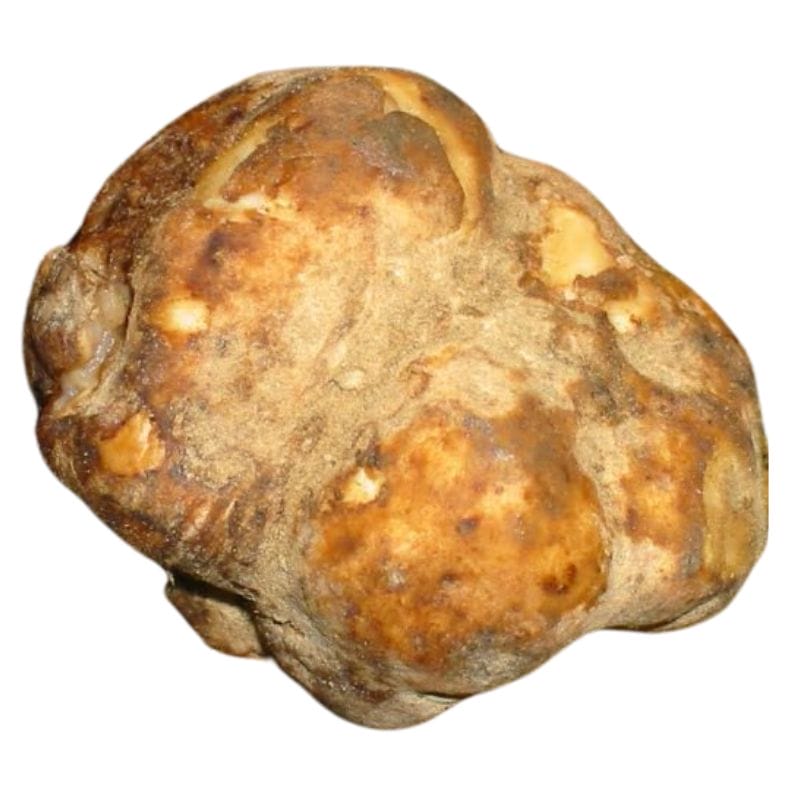
Terfezia and Tirmania are two types of truffles that are sometimes called desert truffles. These are a bit different from the truffles we usually think of, with their bold flavors and rich aromas.
These ones are a little more understated, but they’re fascinating in their own right. What makes them stand out is their ability to thrive in dry, harsh environments where you wouldn’t expect something so delicate to grow.
Unlike the earthy, intense aroma of black or white truffles, Terfezia and Tirmania truffles have a milder scent and flavor. They’re often described as nutty, with a hint of sweetness, but they lack the strong garlicky or musky notes you might associate with other truffles.
Their texture is also different—more firm and less oily than what you’d find with species like Tuber oregonense. They might not have the same culinary punch, but they’re still prized in traditional dishes, where their subtle flavors shine in simpler recipes.
When it comes to appearance, they’re easy to spot once you know what you’re looking for. They’re round to slightly irregular in shape, and their color can range from light beige to a reddish-brown, depending on the species.
The surface is usually smooth or slightly textured, without the rough, knobby look of a black truffle. Cut one open, and you’ll see a pale interior that’s often uniform in color, lacking the intricate veining you’d see in something like Leucangium carthusianum.
Pecan Truffle (Tuber lyonii)
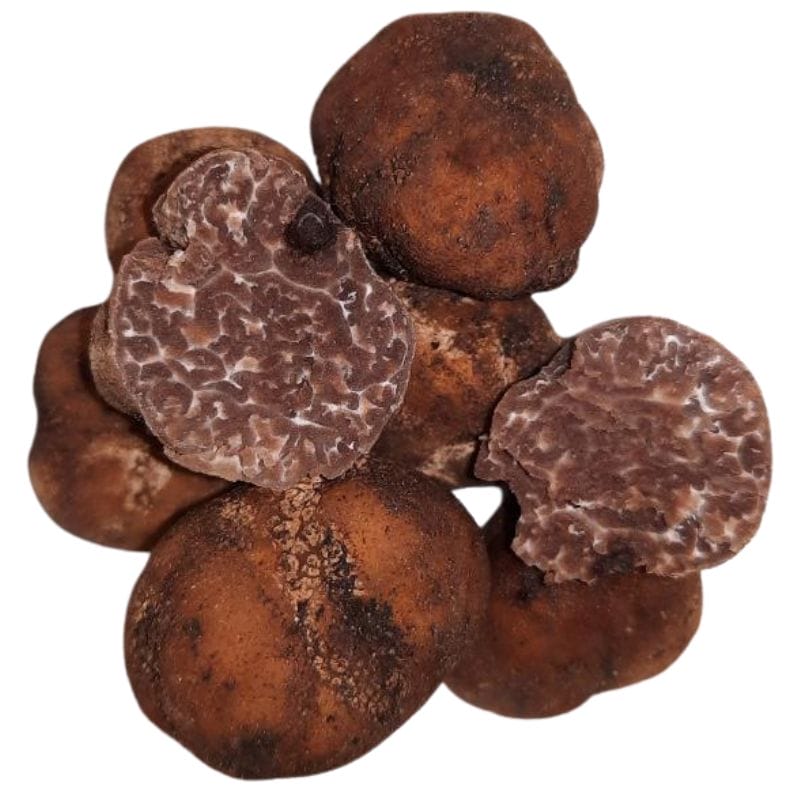
Tuber lyonii, also known as the pecan truffle, is a native North American truffle that grows underground near the roots of pecan trees. You’ll mostly find it in the southeastern U.S., especially in states like Texas, Georgia, and Mississippi.
On the outside, pecan truffles are round to lumpy and have a smooth, light brown skin that darkens as they age. They’re usually about the size of a marble or golf ball, and sometimes they even poke up slightly through the soil surface.
If you slice one open, the inside has a pretty marbled look—light tan streaks mixed with darker brown, almost like wood grain. The smell is earthy, nutty, and kind of warm, especially when they’re fully mature.
When you’re out looking for them, check under mature pecan trees or other hardwoods like oaks and hickories. Trained dogs can help sniff them out, but people sometimes spot them by looking for little cracks in the soil or raised areas near the tree’s base.
Compared to other U.S. truffles like the Oregon white truffle or the Appalachian black truffle, pecan truffles have a milder flavor and are more common in orchards. They’re a solid option in the kitchen—freshly sliced over pasta or mixed into butter—and they don’t come with the high price tag of their European cousins.
Truffle Lookalikes To Avoid
When you’re out hunting you also need to know about a few different fungi species that look very similar to the delicious truffles we’re after but are either inedible or not worth eating. Keep an eye out for:
Pine Truffles (Geopora cooperi)
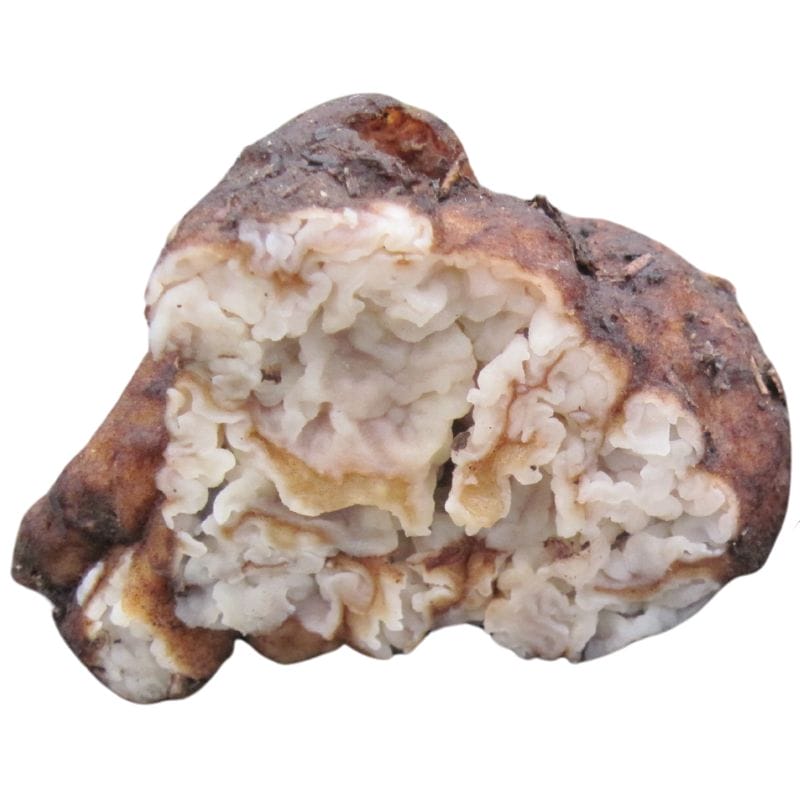
Geopora cooperi is a fungus that can easily confuse someone new to truffle hunting. It’s sometimes called the pine truffle because it grows underground like a true truffle and often pops up near certain trees.
At first glance, it might seem like you’ve hit the jackpot, but this one is a false truffle, not something you’d want to eat or sell.
The easiest way to tell Geopora cooperi apart from real truffles is by looking closely at its structure. While true truffles have a smooth or slightly knobby exterior and a marbled interior, Geopora cooperi has a rougher, more irregular outer surface.
When it matures, it sometimes splits open, revealing a cup-like shape, which true truffles never do. Inside, it’s less dense and doesn’t have the intricate veining that makes real truffles so unique.
Another big difference is the smell. True truffles have a strong, rich aroma that’s earthy, sweet, or garlicky, depending on the species. Geopora cooperi, on the other hand, has a much weaker scent, and it’s not as pleasant or distinctive.
If you’re relying on aroma to identify your find, this one will give itself away pretty quickly. So, while it might look similar at first, a closer inspection will show it’s not the culinary treasure you’re hoping for.
Stinking Slime Truffle (Melanogaster ambiguus)
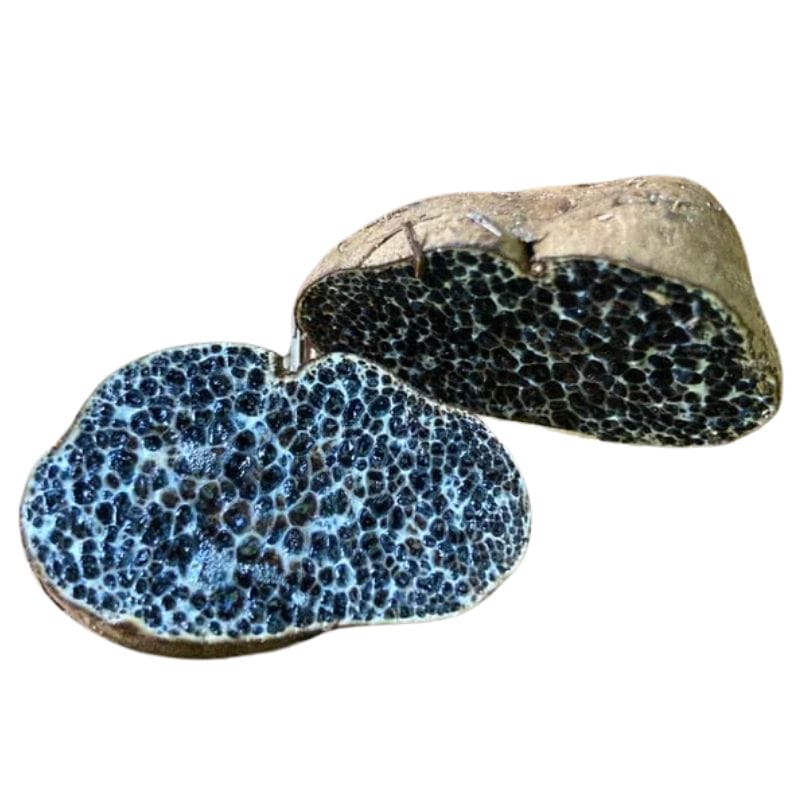
Melanogaster Ambiguus, because of their reddish-brown to dark brown exterior, might look like true truffles at first glance, but they’re quite different when you know what to look for.
The key difference is on the inside. When you cut open Melanogaster ambiguus, the interior is filled with flattened cells that have a shiny black gelatinous feel to them. Real truffles, on the other hand, have those beautiful marbled veins running through their flesh, almost like a web.
Another giveaway is the smell. While real truffles have a rich, earthy aroma that’s mouthwatering, Melanogaster ambiguus tends to have a much stronger, almost unpleasant odor—it’s not something you’d want to sprinkle on your pasta.
Earthballs (Scleroderma)
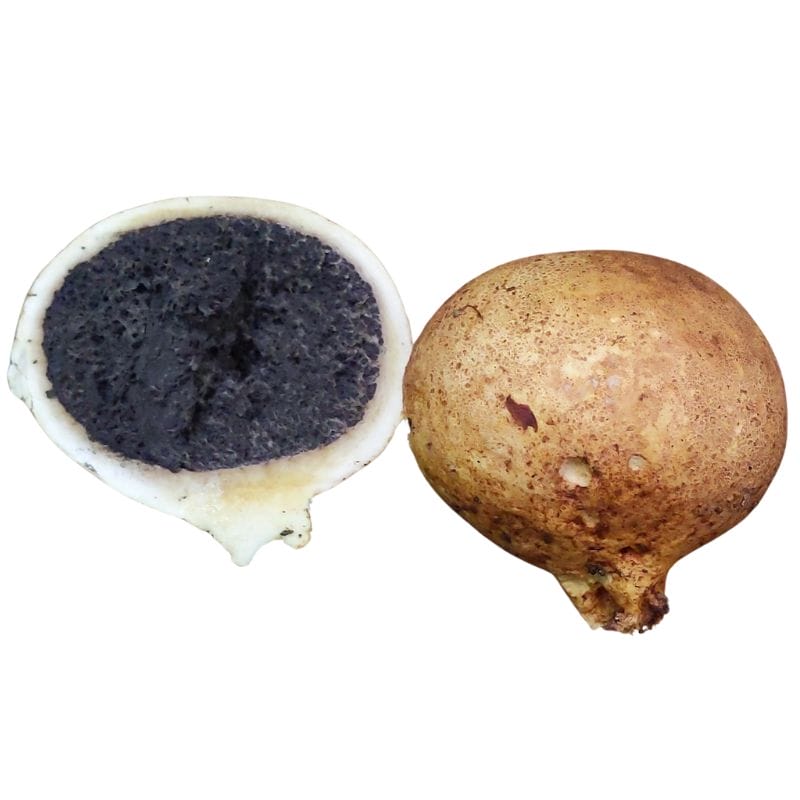
Scleroderma, commonly called earthballs, can easily fool someone who’s just starting out because they grow underground and have a round shape similar to truffles. But don’t be tricked—Scleroderma is not a true truffle, and it’s actually toxic, so it’s important to know how to tell the difference.
The first thing you’ll notice is the outer skin, which is thicker and tougher than that of most truffles. It can range in color from yellowish to dark brown, often with a rough or cracked texture.
If you cut it open, the difference becomes even clearer. While true truffles have a marbled interior with delicate white veins, Scleroderma starts out with a whitish inside that quickly darkens as it matures, turning black or purple with no marbling. It’s dense and solid, almost like charcoal in the later stages.
Another big giveaway is the smell. True truffles have a rich, earthy aroma that makes them so prized, while Scleroderma has little to no pleasant scent—some even describe it as musty or unpleasant.
Deer Truffles (Elaphomyces)
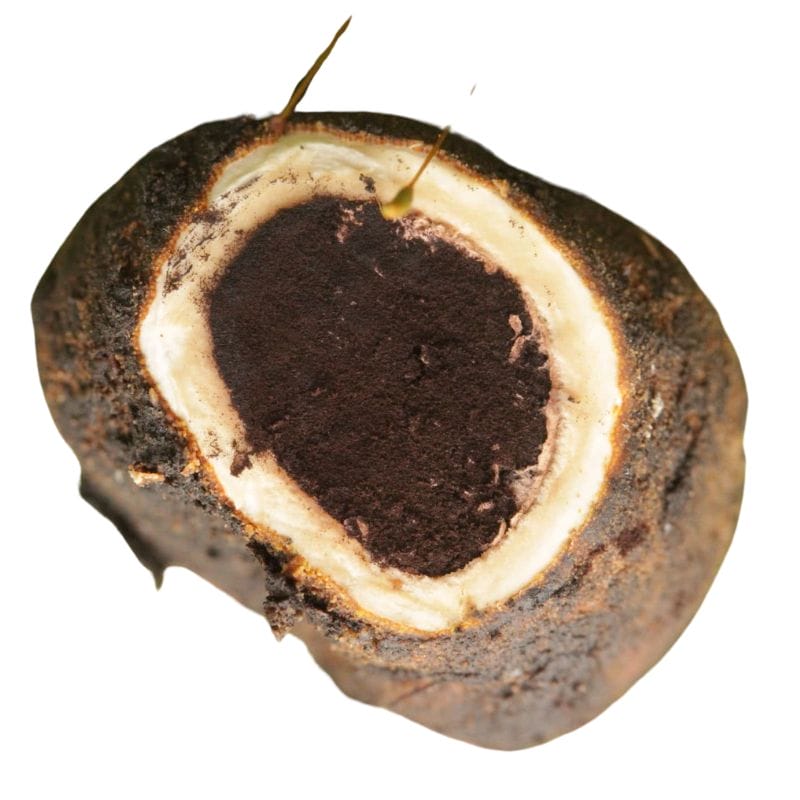
Elaphomyces, also known as deer truffles, look like true truffles at first glance, but they’re a whole different story. They’re called deer truffles because wildlife, especially deer and rodents, love to eat them. For us humans, though, they’re not edible—and definitely not what you want to mistake for a prized truffle.
Here’s how you can tell Elaphomyces apart from the real thing. First, they have a tough, warty outer surface that can range from pale tan to black, depending on the species and their age.
When you cut them open, the inside is solid and sometimes speckled or marbled, but not in the delicate, vein-like pattern you’d see in true truffles.
Their smell is also a big giveaway. Instead of the rich, earthy aroma of an edible truffle, Elaphomyces either has little scent or an odor that’s earthy but not particularly appealing.
Another thing to know is that Elaphomyces often grows deeper in the soil than true truffles, and they tend to have a harder, woodier texture.
Best Practices For Finding Truffles
Truffle hunting can be a rewarding adventure if you know the right tips and tricks. Here’s what you should keep in mind to improve your chances of finding these underground treasures:
Wait 10 to 14 Days After Heavy Rain
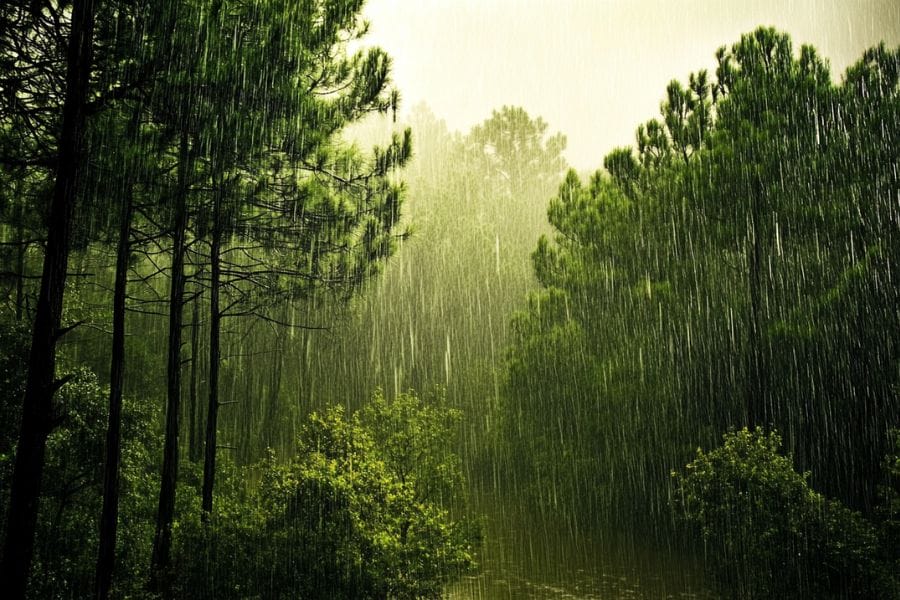
After a heavy rain, it’s best to wait about 10 to 14 days before heading out. This gives the truffles time to mature and release their signature aroma, making it easier for you (and your dog) to sniff them out. Rain helps truffles grow, but they don’t start giving off their scent right away.
As the soil warms up, the truffles get more aromatic, and the ground becomes looser, which makes digging easier without disturbing the environment too much. The timing is perfect to find truffles at their best—both in quality and in how easy they are to locate.
Find the Right Trees
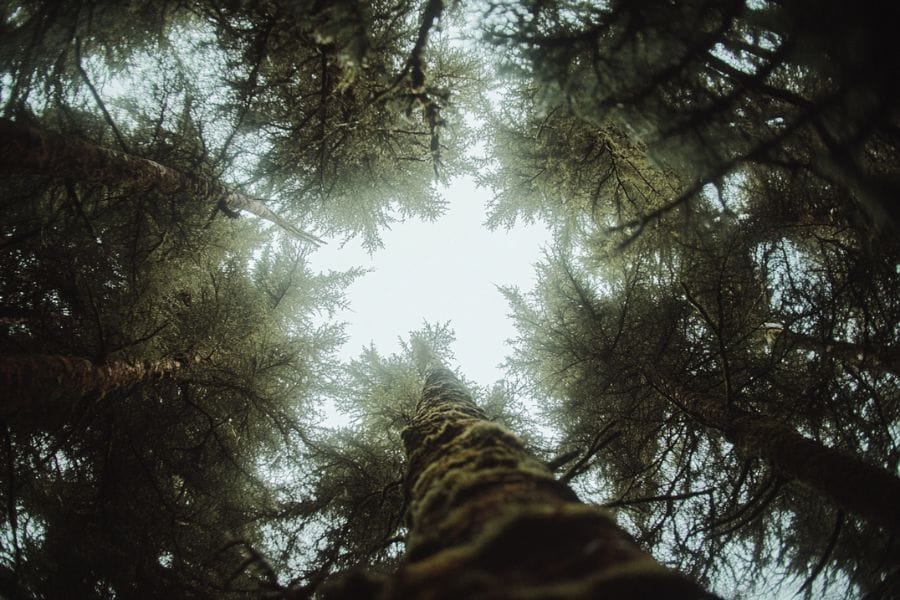
Truffles don’t grow just anywhere—they have a special relationship with certain trees. You won’t find them under just any tree, so knowing which ones to look for can make all the difference. Some of the best trees to look out for are:
- Pines
- Douglas-firs
- Oaks
- Hazelnuts
- Cypresses
- Willows
For example, if you’re looking for Oregon white truffles, keep an eye out for Douglas-fir trees. California black truffles, on the other hand, are often found near oaks and hazelnuts. The soil around these trees also needs to be slightly alkaline, so it helps to know what kind of ground you’re walking on as well.
Watch for Wildlife Activity
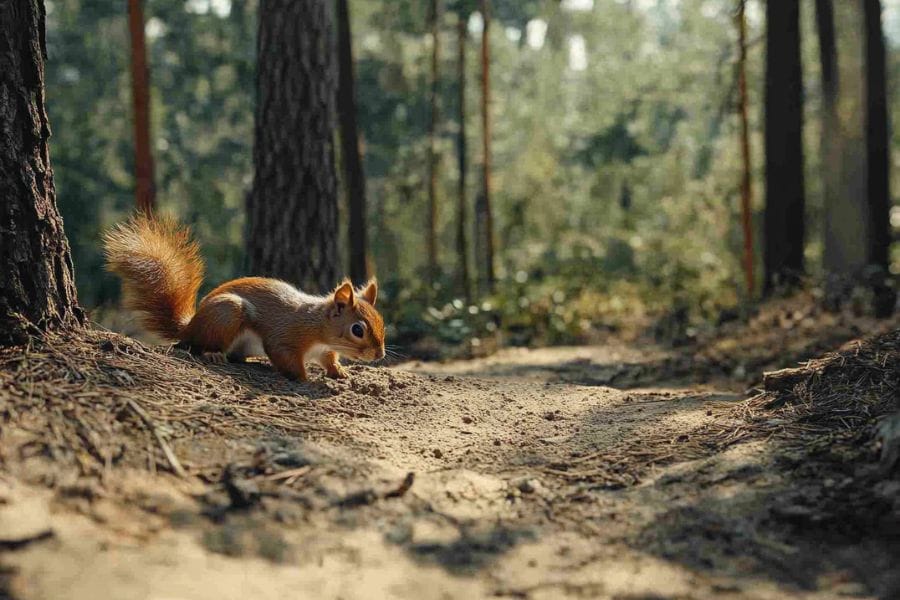
Animals like squirrels and chipmunks often help spread truffle spores, and sometimes their digging can lead you straight to truffles. While you won’t always find truffles in every pit animals dig (they also look for things like acorns or bulbs), fresh digs are a good clue. The more recent the pit, the better chance it has of leading to truffles.
Even though animals are a part of the truffle cycle, most hunters prefer using dogs to find the real treasure underground. Dogs have an incredible nose for truffles and can pinpoint their location much more reliably than any squirrel or chipmunk.
Get a Little Help from a Truffle-Hunting Dog
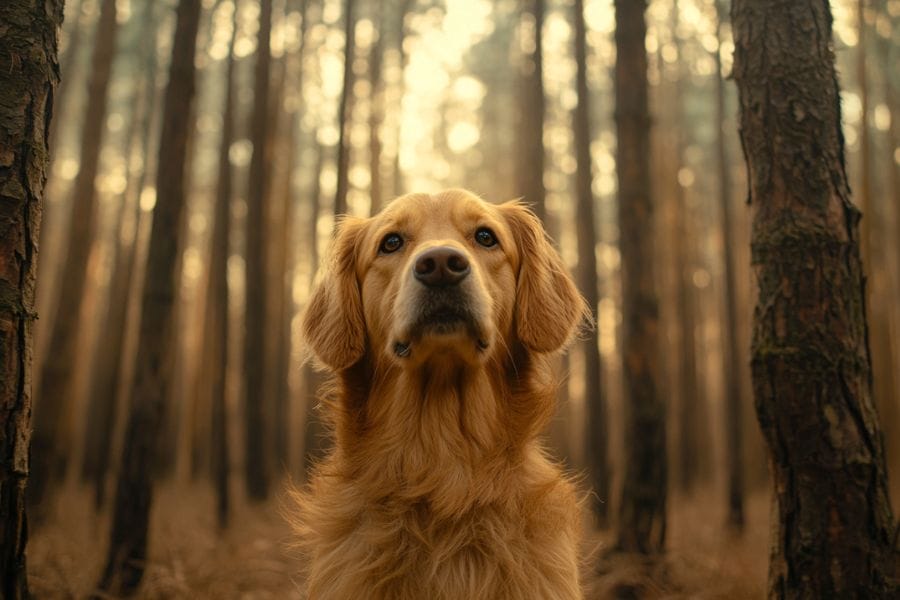
If you’re serious about truffle hunting, a trained dog can make your life a whole lot easier. Their sense of smell is extraordinary, and they’re trained to find mature truffles buried beneath the surface. Many truffle hunters swear by their dogs, and for good reason—they’re much more accurate than humans when it comes to sniffing out truffles.
If you don’t already have a trained dog, you can connect with local foraging groups or specialized trainers who offer truffle-hunting services. Some places even host events where you can see experienced handlers with their dogs in action. And if you’re feeling adventurous, you can train your own dog using truffle-scent kits and practice in a controlled space before hitting the woods.
Before you head out
Before embarking on any foraging activities, it is essential to understand and follow local laws and guidelines. Always confirm that you have permission to access any land and obtain permission from landowners if you are foraging on private property. Trespassing or foraging without permission is illegal and disrespectful.
For public lands, familiarize yourself with the foraging regulations, as some areas may restrict or prohibit the collection of mushrooms or other wild foods. These regulations and laws are frequently changing so always verify them before heading out to hunt. What we have listed below may be out of date and inaccurate as a result.
Where You Can Find Truffles Around The State
Now we’re going to go over five of the best locations for finding truffles. We’ll go a bit in-depth here and then provide a much longer list of other spots to try.
Gunnison National Forest
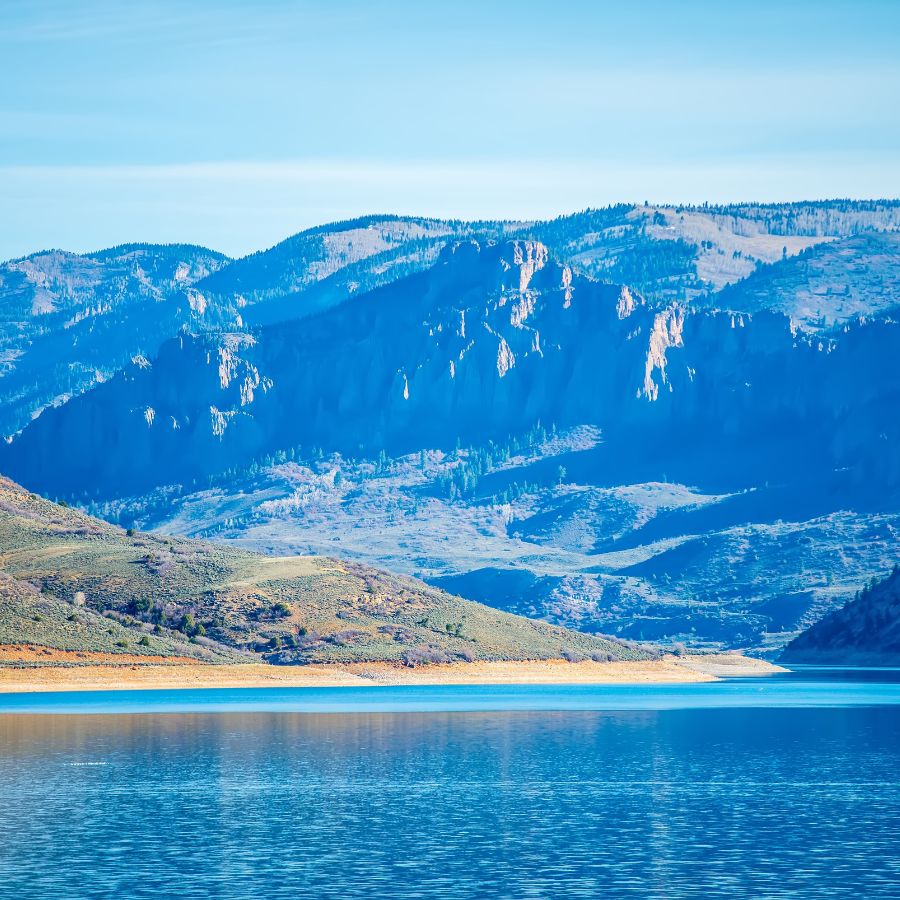
Gunnison National Forest is home to Colorado’s largest aspen grove, painting the landscape gold every fall. In the dense understory beneath these trees, certain pockets of the forest offer the kind of moist, shaded ground that supports the growth of wild truffles.
Along the Mill-Castle Trail in the West Elk Wilderness, the thick spruce-fir stands and well-developed duff layer create a promising environment for truffle formation. The trail weaves past secluded benches and creek drainages where soil remains damp well into summer.
Near the upper reaches of Ohio Creek Road, especially in the aspen-dominated groves just below the flanks of Carbon Peak, you’ll find deep, humus-rich soils under a canopy that stays cool and shaded. These mixed forests tend to retain moisture after snowmelt.
Further south, the alpine transition zones around Sawmill Park and the wooded ridges above Soap Creek hold scattered Engelmann spruce and fir—both known hosts for truffle species.
San Juan National Forest
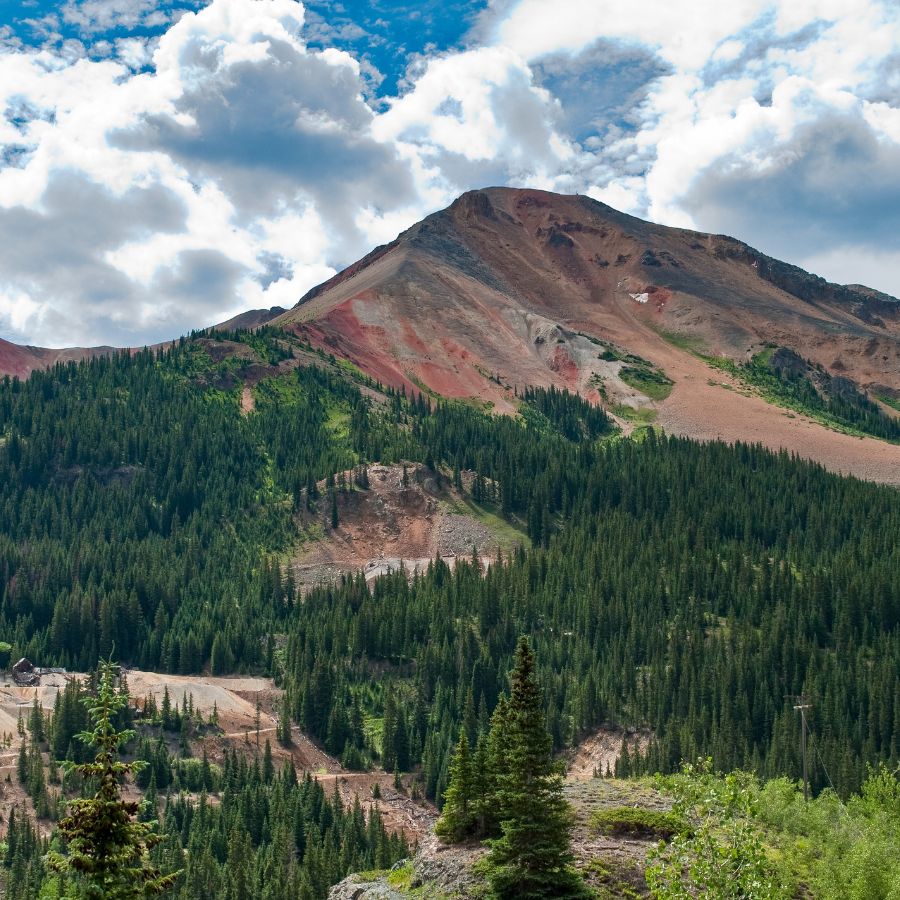
San Juan National Forest spans over 1.8 million acres and includes some of the most rugged terrain in the southern Rockies. One area shaped by centuries of glacial runoff and rich volcanic soil—Hermosa Creek north of Durango—also happens to support the underground fungi that form truffles beneath fir and spruce.
The trail network around Relay Creek, just west of the Cascade Divide Road, runs through mixed-conifer forest with thick understory and consistent late-season moisture. Areas with older Engelmann spruce and Douglas-fir stands in this zone provide reliable habitat for truffles associated with mature tree roots.
Between Twin Sisters and Sharkstooth Pass in the La Plata Mountains, elevation shifts create cool, damp microhabitats along forested ridgelines. In particular, north-facing slopes above the West Mancos Trail tend to hold enough soil moisture and organic debris to support truffle species.
On the eastern side of the forest, the Columbine Ranger District includes truffle-prone terrain near Quartz Lake and the upper Pine River.
White River National Forest
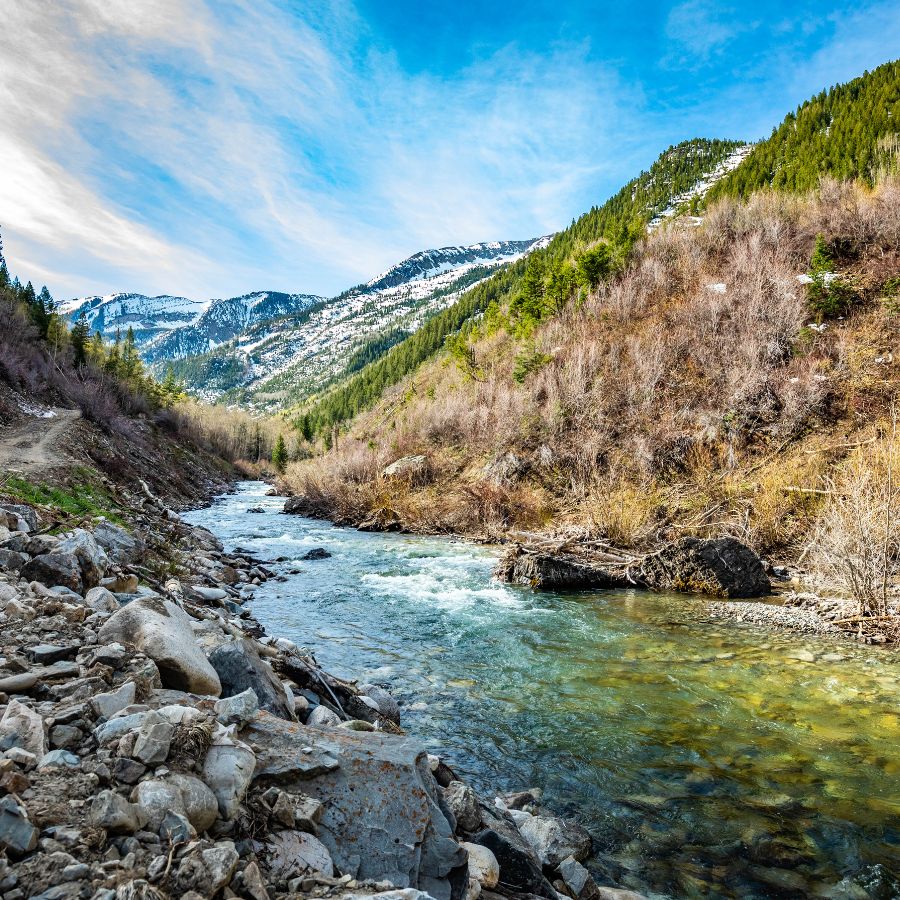
White River National Forest is where you’ll find the Maroon Bells, two of Colorado’s most photographed peaks. West of there, in the heavily wooded terrain above Snowmass Lake, truffles have been recorded under spruce and fir where runoff keeps the soil soft and saturated well into the growing season.
Further east, the upper Fryingpan River drainage holds a patchwork of lodgepole and subalpine fir that stretches past Mount Thomas and Savage Lakes. In this area, shallow slopes and persistent shade create reliable conditions for truffle species that fruit just under the leaf litter.
North of I-70, the forest above Lime Creek features scattered alpine wetlands bordered by dense forest bands. Where trails wind through older spruce near the upper elevations, you’ll find the kind of cool, settled ground where Rhizopogon and other truffles tend to form.
Near the base of Castle Peak, east of Eagle, mixed conifer stands follow seasonal runoff paths and fill the valleys around Heart Lake. In some of those pockets, truffle-producing fungi associate with Douglas-fir roots where the forest floor stays undisturbed and damp for much of the summer.
Rio Grande National Forest
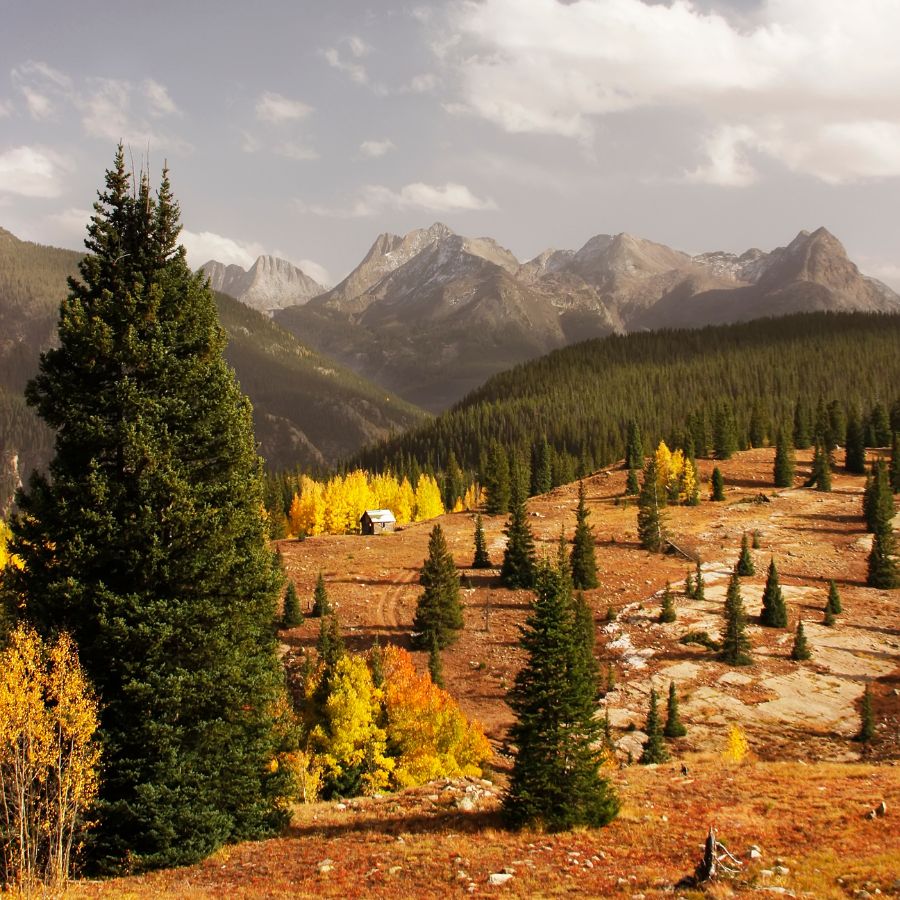
Rio Grande National Forest surrounds the high volcanic plateau of the La Garita Mountains, where entire ridgelines are laced with old lava flows and glacial debris. North of Pool Table Mountain, wild truffles grow in the thick duff where meltwater seeps into soft volcanic soil.
The saddle between Canby Mountain and the Continental Divide, just above Stony Pass, holds a sheltered basin that stays damp even in dry years. Truffles have been documented in those upper drainages, especially where the Engelmann spruce stands remain undisturbed and sunlight barely reaches the forest floor.
Further south, in the tucked-away valleys around Bear Lake and Archuleta Creek, the terrain shifts into dense, mossy timber broken by quiet meadows. Some of the best truffle-producing zones here run along the low-gradient drainages where organic matter builds up over time and root networks stay undisturbed.
Near the edge of the Sangre de Cristo Range, between San Isabel Creek and Indian Creek, there’s a string of narrow, shaded ravines below timberline. In these pockets, the right fungi fruit quietly beneath Douglas-fir and limber pine, scattered just beneath the leaf litter in the cooler parts of summer.
Arapaho National Forest
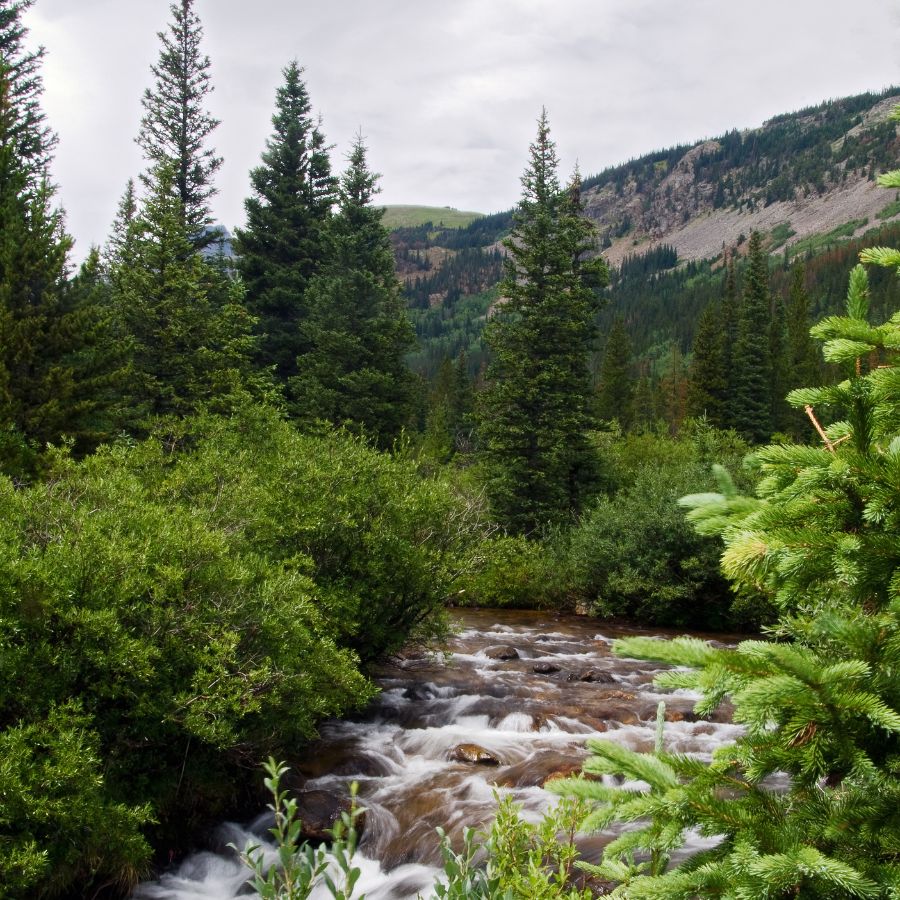
Arapaho National Forest shares its borders with the Continental Divide and includes some of the most rugged alpine terrain in northern Colorado. Just below tree line on the west side of Berthoud Pass, the spruce-fir stands near Current Creek hold truffle-producing fungi in the thick, undisturbed soil along shaded drainage cuts.
In the forested flats between Vasquez Peak and Ptarmigan Peak, narrow game trails wind through stretches of Engelmann spruce where the ground stays cool and damp even in mid-summer. Some of the most reliable truffle growth in this area has been observed along the lower segments of the Second Creek Trail, especially where runoff flows gather beneath dense tree cover.
The Middle Fork of the Williams Fork River carves a quiet valley south of Ute Pass, flanked by mixed conifers and a thick carpet of decomposing leaf litter. You’ll find truffles there in the sloped terrain west of Horseshoe Campground, where aspen groves give way to spruce and fir along the upper banks.
Further north, the steep hillsides around Kinney Creek and the Byers Peak Wilderness form a patchwork of deep forest and marshy inlets. Near the confluence with Darling Creek, mature Douglas-fir stands cover wide stretches of moist ground where truffles have been found growing just beneath the duff layer.
Other Great Locations For Truffles
In addition to those areas, Colorado has a wide range of other truffle-producing landscapes worth exploring.
| Northwest | What’s allowed & why it’s good truffle ground |
| White River National Forest | Spruce-fir benches and volcanic duff in legal USFS zones; personal foraging is permitted. |
| Flat Tops Wilderness Area | Settled forest floor beneath subalpine fir; hand-harvest allowed in wilderness backcountry. |
| Trappers Lake Area | Moist glades above Cold Springs Creek yield summer truffles; USFS rules allow gathering. |
| Rabbit Ears Pass | North-facing slopes under spruce hold duff truffles; personal-use access is legal. |
| Routt National Forest | Mixed conifers over glacial till; low-impact hand collection allowed under forest policy. |
| Douglas Pass | Shaded gullies and sandstone benches fruit late-season truffles; USFS allows noncommercial harvest. |
| Grand Mesa National Forest | Fir-aspen ridges above stream-fed benches hold summer truffles; personal-use foraging permitted by USFS. |
| Buffalo Pass | High-elevation glades with settled duff near old logging roads; noncommercial gathering allowed under forest policy. |
| Southwest | What’s allowed & why it’s good truffle ground |
| San Juan National Forest | Shaded conifer valleys and deep glacial debris support truffles; USFS hand-gathering allowed. |
| Uncompahgre National Forest | Moist spruce benches above canyon rims yield truffles; foraging permitted under federal use rules. |
| Hermosa Creek Trail region | Fir groves near alpine runoff paths fruit spring truffles; noncommercial harvest allowed. |
| Red Mountain Pass | North-facing slopes with old fir hold truffle patches; personal collection is allowed. |
| Mount Sneffels region | Mixed spruce near talus fans fruit well after monsoon rain; legal foraging permitted. |
| Wilson Peak region | Drainage cuts in high subalpine forest give seasonal truffles; USFS use rules apply. |
| Lizard Head Pass | Old-growth forest under west slopes supports fungi growth; personal-use rule covers foraging. |
| Pagosa Peak region | Aspen–spruce transitions yield mid-season truffles; allowed under USFS noncommercial policy. |
| Middle Fork Piedra River area | Deep forest duff near riverbanks supports fruiting; foraging is permitted in these sections. |
| Los Pinos Pass | Fir groves with minimal underbrush hold consistent truffle beds; allowed under federal guidelines. |
| Central Mountains | What’s allowed & why it’s good truffle ground |
| Gunnison National Forest | Mixed spruce-aspen terrain with old moraines; low-impact collection ok in forest lands. |
| Crested Butte region | Forest benches east of town hold summer truffles; USFS allows personal harvest. |
| Lake Irwin area | Truffles form near avalanche chutes under fir; family foraging is permitted. |
| Baldy Mountain (Gunnison Co) | Duff-rich slopes near timberline support fungi; standard USFS collection policy applies. |
| Ohio Pass | Broad spruce stands above the pass yield spring fruitings; legal to gather for personal use. |
| Kebler Pass | North side aspen-fir mix supports truffles in wet years; USFS rule permits low-impact foraging. |
| West Elk Mountains | Subalpine basins and deep soil host edible species; allowed under forest use policies. |
| Monarch Pass forests | Fir stands near runoff-fed meadows produce fruiting bodies; personal harvest is allowed. |
| Slumgullion Pass | Wet ground below switchbacks gives dense duff fungi; noncommercial use permitted. |
| La Garita Mountains | Volcanic basins with fir-covered ridges support seasonal truffles; allowed for personal use. |
| Tincup Pass | Forest bands just below treeline fruit in late summer; USFS foraging rules apply. |
| Turret Ridge | High forested ledges near runoff zones support ground truffles; noncommercial collection is legal. |
| Fourmile Travel Management Area | Open forest glades near creeks support fungi; covered by standard USFS use rules. |
| South-Central | What’s allowed & why it’s good truffle ground |
| Rio Grande National Forest | Volcanic ridges and pine flats yield truffles after snowmelt; noncommercial foraging permitted. |
| Conejos River Drainage | Moist forest slopes near confluences support fungi growth; personal gathering allowed. |
| Blanca Peak region | Truffles develop in isolated fir bands along lower ridges; USFS rules permit low-impact harvest. |
| Cucharas Pass | Subalpine valleys with spruce forest support seasonal truffles; foraging is permitted. |
| Central Rockies | What’s allowed & why it’s good truffle ground |
| Pike National Forest | Spruce-fir forests and sheltered drainages; allowed under standard USFS personal-use policy. |
| San Isabel National Forest | High conifer basins west of the Arkansas River yield truffles; foraging allowed under forest rules. |
| Holy Cross Wilderness | Glacial troughs with fir cover fruit well; personal gathering is permitted in designated zones. |
| Sawatch Range | Deep duff in fir-dominated slopes supports fungi; legal to gather under federal rules. |
| Tenmile Range | Truffles form in high valleys with thick spruce litter; allowed under USFS use policy. |
| Halfmoon Creek Area | Forested benches beside the creek yield fungi late season; personal harvest permitted. |
| North Cottonwood Trailhead | Moist zones under conifers fruit spring truffles; covered by USFS foraging guidelines. |
| Cottonwood Pass | North-facing slopes hold settled duff under fir; foraging allowed in forest sections. |
| Elk Mountains | Glacial valleys and conifer bands fruit during monsoon stretch; gathering permitted. |
| Northern Mountains | What’s allowed & why it’s good truffle ground |
| Arapaho National Forest | North-facing glades and drainage flats fruit well; forest service permits family use. |
| Roosevelt National Forest | Mixed conifer zones above Boulder Creek hold truffle ground; foraging legal under USFS policy. |
| Vail Pass region | Settled soil under old fir stands near creeks gives consistent fruitings; permitted use. |
| Frisco Peninsula forests | Duff-rich forest sections near Dillon Reservoir support growth; foraging allowed. |
| High Rockies / Central | What’s allowed & why it’s good truffle ground |
| Maroon Bells–Snowmass Wilderness | Rocky basins and settled duff zones under fir; backcountry collection allowed seasonally. |
| Castle Creek Valley | South-facing slopes beneath aspen-fir mix give late-season truffles; USFS use policy applies. |
| Mosquito Range | Shaded ridges with glacial till and fir cover produce; legal personal harvest allowed. |
When The Best Time Of The Year Is To Find Truffles
The best time to hunt for truffles in Florida typically falls during the cooler months, from late fall to early spring. These months provide the right combination of moisture and moderate temperatures for truffle growth.
After a period of heavy rain, waiting 10-14 days allows the soil to stabilize and the truffles to mature, enhancing their aroma. Focus on mornings or cool, overcast days to improve conditions for foraging, as truffle scent is more pronounced in cooler, damp environments.
Seasonal timing is key, as Florida’s warm, humid climate can impact truffle availability outside of these optimal months.
One Final Disclaimer
The information provided in this article is for general informational and educational purposes only. Foraging for wild plants and mushrooms involves inherent risks. Some wild plants and mushrooms are toxic and can be easily mistaken for edible varieties.
Before ingesting anything, it should be identified with 100% certainty as edible by someone qualified and experienced in mushroom and plant identification, such as a professional mycologist or an expert forager. Misidentification can lead to serious illness or death.
All mushrooms and plants have the potential to cause severe adverse reactions in certain individuals, even death. If you are consuming foraged items, it is crucial to cook them thoroughly and properly and only eat a small portion to test for personal tolerance. Some people may have allergies or sensitivities to specific mushrooms and plants, even if they are considered safe for others.
Foraged items should always be fully cooked with proper instructions to ensure they are safe to eat. Many wild mushrooms and plants contain toxins and compounds that can be harmful if ingested.

